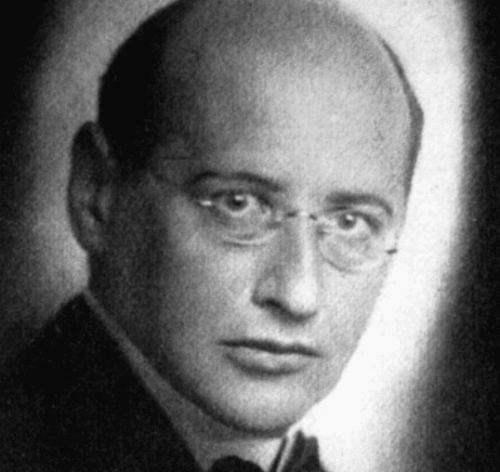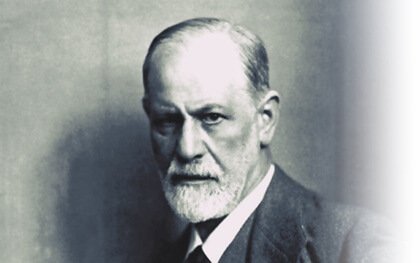Theodor Reik and Non-Medical Psychoanalysis

Theodor Reik marked a before and after in psychoanalysis and wrote remarkable books where he manifested his reflections. His work paved the way so that laymen could psychoanalyze people just like doctors.
He made great contributions to psychoanalytic theory. He passionately delved into the world of The Uncanny, one of Freud’s most remarkable books. Moreover, he worked on the concept of ‘faulty criminals’ to explain how some individuals broke the law with the unconscious goal of being punished.
Theodor Reik wrote more than 100 texts, including essays and books. Some of his best-known works are The Compulsion to Confess, The Unknown Murderer, and Masochism in Modern Man. Sadly for him, his fame came mostly after his death.

The early years of Theodor Reik
Like most psychoanalysts of his time, Theodor Reik came from a Jewish family with an Austrian background. Reik was born in Vienna on May 12, 1888. During his childhood, he witnessed many arguments between his father and his grandfather. One was a freethinker, while the other was an almost fanatical religious man.
Reik’s mother was emotionally unstable. She suffered from severe depression, which scarred the future psychoanalyst’s childhood. In addition, his father died when he was only 18 years old. Consequently, he had to start working to support his family. This whole situation led him to an acute crisis characterized by self-accusation and self-pity.
“Romance fails us and so do friendships, but the relationship of parent and child, less noisy than all the others, remains indelible and indestructible, the strongest relationship on earth.”
-Theodor Reik-
Despite his many limitations, he managed to get a degree in philosophy and letters. He based his thesis on Gustave Flaubert’s The Temptation of St. Anthony. Sometime later, he personally met Sigmund Freud and established a long-lasting bond with him.
Theodor Reik: Freud’s spiritual son
Freud refused to be Theodor Reik’s analyst. Instead, he decided to refer him to psychoanalyst Karl Abraham, who was close to Freud as well. Freud himself paid for Reik’s psychoanalysis. And not only that, but he took him under his wing and sent him monthly allowances to help cover his expenses. Reik began to act as a psychoanalyst soon after. However, since he wasn’t a doctor, he wasn’t allowed to analyze anyone.
Reik became Freud’s protégé and collaborated in his work. They had such a close relationship that even the Vienna Circle would jokingly call him “little Freud”. Reik dressed just like Freud, fixed his beard like him, talked like him, and even smoked the same cigars. Because of this, Freud recognized Theodor Reik’s ‘paternal wish’, so he proceeded to call him his spiritual son.

Non-medical psychoanalysis
In 1925, a famous trial against Theodor Reik took place. He was forbidden to practice psychoanalysis because he didn’t have a medical license. This case sparked a huge controversy in the psychoanalytic movement. Almost all American psychoanalysts were against the idea of allowing laymen to practice psychoanalysis, while European psychoanalysts were in favor.
This controversy led Sigmund Freud to publish a work where he reflected on whether or not laymen could practice psychoanalysis. Reik also decided to settle in Berlin, convinced that he could practice psychoanalysis there. However, the Nazi rise to power forced him to immigrate first to the Netherlands in 1934 and then to the United States in 1938.
American psychoanalysts never accepted him as one of their own. This led Theodor Reik to develop his “third ear” theory. According to it, psychoanalysts basically work with their intuition, which is the axis of their countertransferential work. Reik died of heart disease on December 31, 1969, in New York.
“The secret of human happiness is not in self-seeking but in self-forgetting.”
-Theodor Reik-
Theodor Reik marked a before and after in psychoanalysis and wrote remarkable books where he manifested his reflections. His work paved the way so that laymen could psychoanalyze people just like doctors.
He made great contributions to psychoanalytic theory. He passionately delved into the world of The Uncanny, one of Freud’s most remarkable books. Moreover, he worked on the concept of ‘faulty criminals’ to explain how some individuals broke the law with the unconscious goal of being punished.
Theodor Reik wrote more than 100 texts, including essays and books. Some of his best-known works are The Compulsion to Confess, The Unknown Murderer, and Masochism in Modern Man. Sadly for him, his fame came mostly after his death.

The early years of Theodor Reik
Like most psychoanalysts of his time, Theodor Reik came from a Jewish family with an Austrian background. Reik was born in Vienna on May 12, 1888. During his childhood, he witnessed many arguments between his father and his grandfather. One was a freethinker, while the other was an almost fanatical religious man.
Reik’s mother was emotionally unstable. She suffered from severe depression, which scarred the future psychoanalyst’s childhood. In addition, his father died when he was only 18 years old. Consequently, he had to start working to support his family. This whole situation led him to an acute crisis characterized by self-accusation and self-pity.
“Romance fails us and so do friendships, but the relationship of parent and child, less noisy than all the others, remains indelible and indestructible, the strongest relationship on earth.”
-Theodor Reik-
Despite his many limitations, he managed to get a degree in philosophy and letters. He based his thesis on Gustave Flaubert’s The Temptation of St. Anthony. Sometime later, he personally met Sigmund Freud and established a long-lasting bond with him.
Theodor Reik: Freud’s spiritual son
Freud refused to be Theodor Reik’s analyst. Instead, he decided to refer him to psychoanalyst Karl Abraham, who was close to Freud as well. Freud himself paid for Reik’s psychoanalysis. And not only that, but he took him under his wing and sent him monthly allowances to help cover his expenses. Reik began to act as a psychoanalyst soon after. However, since he wasn’t a doctor, he wasn’t allowed to analyze anyone.
Reik became Freud’s protégé and collaborated in his work. They had such a close relationship that even the Vienna Circle would jokingly call him “little Freud”. Reik dressed just like Freud, fixed his beard like him, talked like him, and even smoked the same cigars. Because of this, Freud recognized Theodor Reik’s ‘paternal wish’, so he proceeded to call him his spiritual son.

Non-medical psychoanalysis
In 1925, a famous trial against Theodor Reik took place. He was forbidden to practice psychoanalysis because he didn’t have a medical license. This case sparked a huge controversy in the psychoanalytic movement. Almost all American psychoanalysts were against the idea of allowing laymen to practice psychoanalysis, while European psychoanalysts were in favor.
This controversy led Sigmund Freud to publish a work where he reflected on whether or not laymen could practice psychoanalysis. Reik also decided to settle in Berlin, convinced that he could practice psychoanalysis there. However, the Nazi rise to power forced him to immigrate first to the Netherlands in 1934 and then to the United States in 1938.
American psychoanalysts never accepted him as one of their own. This led Theodor Reik to develop his “third ear” theory. According to it, psychoanalysts basically work with their intuition, which is the axis of their countertransferential work. Reik died of heart disease on December 31, 1969, in New York.
“The secret of human happiness is not in self-seeking but in self-forgetting.”
-Theodor Reik-
All cited sources were thoroughly reviewed by our team to ensure their quality, reliability, currency, and validity. The bibliography of this article was considered reliable and of academic or scientific accuracy.
Reik, T., & Wencelblat, S. (1943). Treinta años con Freud.
This text is provided for informational purposes only and does not replace consultation with a professional. If in doubt, consult your specialist.







